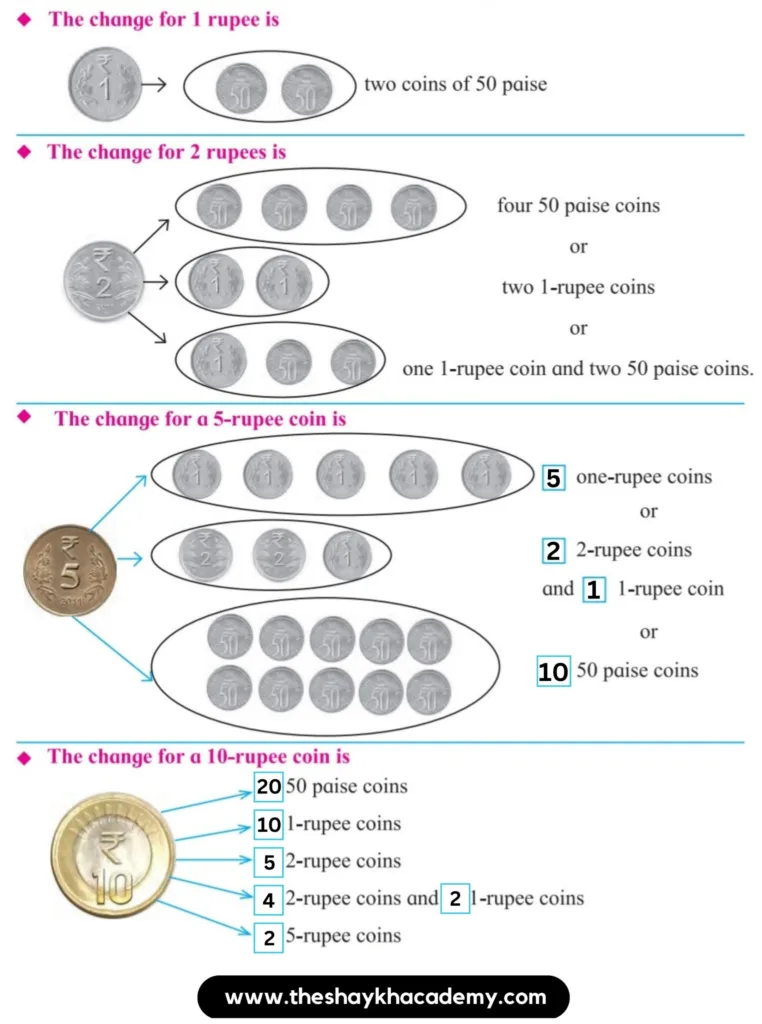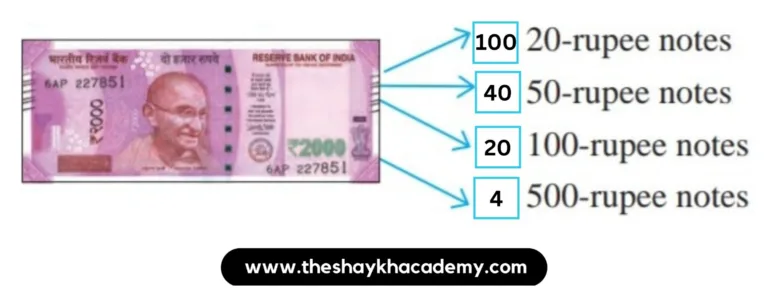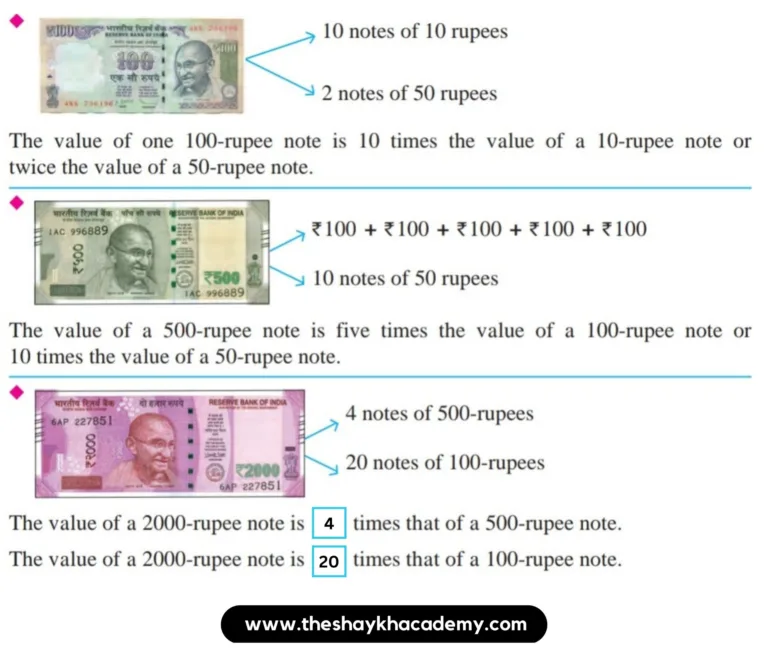Part One
Lesson 7 – Coins and Notes


Ans:
1. Two 20-rupee notes and one 10-rupee coin.
2. One 20-rupee note, three 10-rupee notes.
3. One 20-rupee note, one 10-rupee note, and six 5-rupee coins.
4. Five 10 rupee notes.
5. Ten 5-rupee coins.

Ans:
1. Four 5-rupee coins.
2. Two 10-rupee coins.
3. One 10-rupee coin and two 5-rupee coins.
4. One 10-rupee note, three 2-rupee coins and one 1-rupee coin.
5. Ten 2-rupee coins.

Exercise

2. Ajay has 9 notes. The total value of those notes is ₹500. Which notes does Ajay have and how many of each?
Ans: Ajay has 4 ₹100 notes, 1 ₹50 note, 1 ₹20 note and 3 ₹10 note.
₹100 + ₹100 + ₹100 + ₹100 + ₹50 + ₹20 + ₹10 + ₹10 + ₹10 = ₹500
Total 9 notes and total value is ₹500
3. Swati has some 100-rupee notes, 50-rupee notes and 20-rupee notes. If the total value of the notes is 500, how many notes of each denomination does Swati have?
Ans: Swati has 3 ₹100 notes, 2 ₹50 note, 5 ₹20 notes.
₹100 + ₹100 + ₹100 + ₹50 + ₹50 + ₹20 + ₹20 + ₹20 = ₹500
Total 8 notes and total value is ₹500
4. Nandu has 6 notes. The total value of the notes is 1000. Which notes does Nandu have and how many of each?
Ans: Nandu has 1 ₹500 note, 5 ₹100 notes.
₹500 + ₹100 + ₹100 + ₹100 + ₹100 + ₹100 = ₹1000
Total 6 notes and total value is ₹1000
5. Salma has 11 notes. If the total value of the notes is 1000, which notes does Salma have and how many of each?
Ans: Salma has 1 ₹500 note, 10 ₹50 notes.
₹500 + ₹50 + ₹50 + ₹50 + ₹50 + ₹50 +₹50 + ₹50 + ₹50 + ₹50 + ₹50 = ₹1000
Total 11 notes and total value is ₹1000

